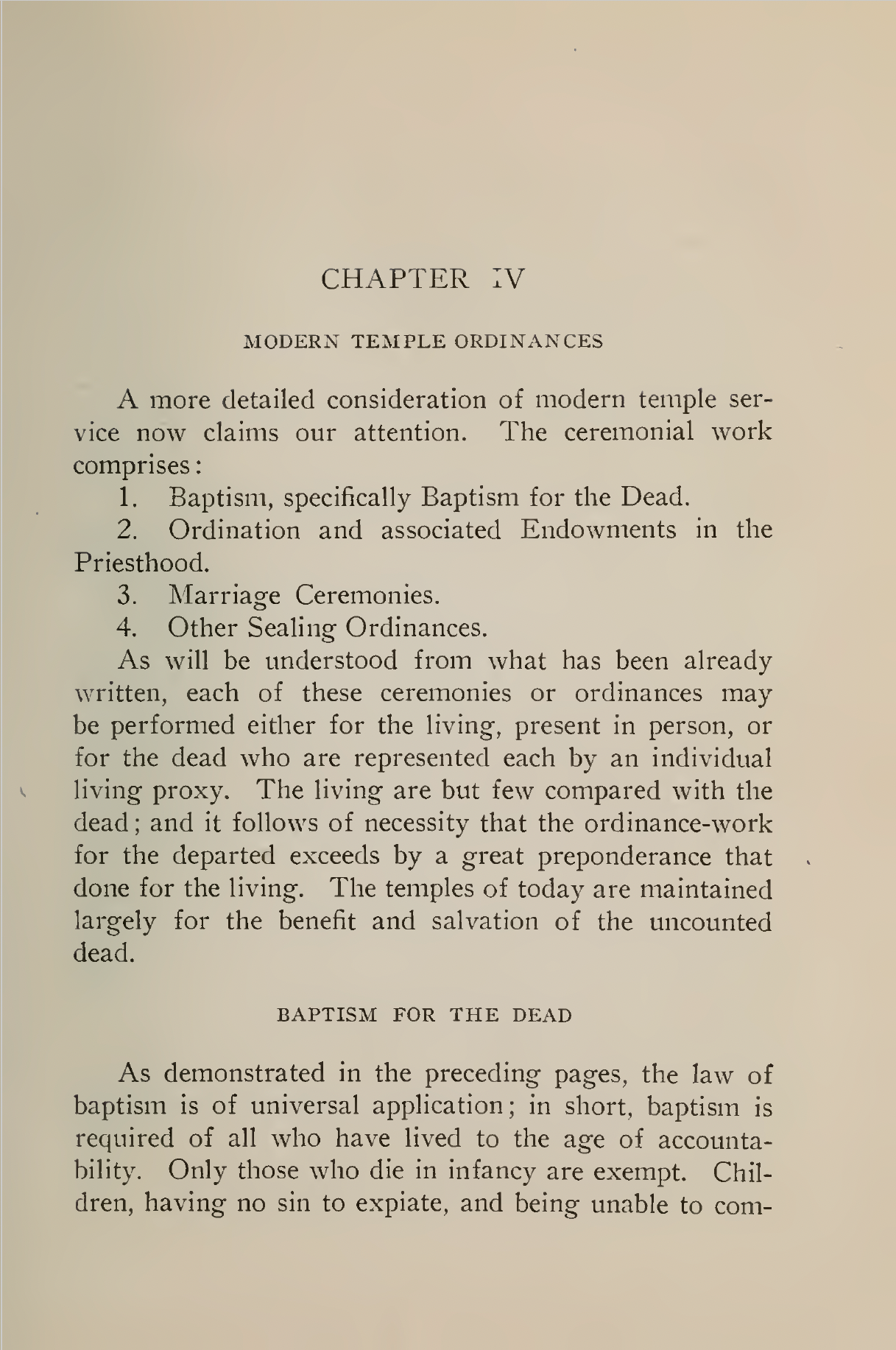James E. Talmage writes that ordinances are performed by proxy for the dead.
- Type
- Book
- Hearsay
- Direct
- Reference
James E. Talmage, The House of the Lord: A Study of Holy Sanctuaries Ancient and Modern (Salt Lake City, UT: The Deseret News, 1912), 89
- Scribe/Publisher
- Deseret News
- Audience
- Reading Public
- Transcription
CHAPTER IV
MODERN TEMPLE ORDINANCES
A more detailed consideration of modern temple service now claims our attention. The ceremonial work comprises :
1. Baptism, specifically Baptism for the Dead.
2. Ordination and associated Endowments in the Priesthood.
3. Marriage Ceremonies.
4. Other Sealing Ordinances.
As will be understood from what has been already written, each of these ceremonies or ordinances may be performed either for the living, present in person, or for the dead wdio are represented each by an individual living proxy. The living are but few compared with the dead ; and it follows of necessity that the ordinance-work for the departed exceeds by a great preponderance that done for the living. The temples of today are maintained largely for the benefit and salvation of the uncounted dead.
The B. H. Roberts Foundation is not owned by, operated by, or affiliated with the Church of Jesus Christ of Latter-day Saints.

